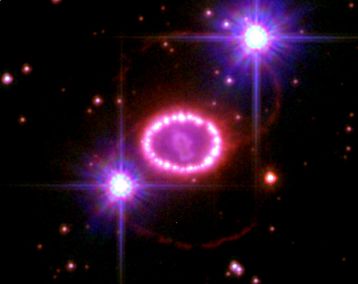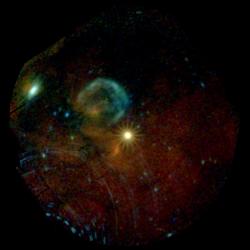The supernova 1987A and Hubble's observations of it helped rewrite the textbooks in the chapter on star explosions * Newton also photographed it in the X field and revealed a 10-fold increase in its brightness in this field since the year 2000

As soon as the Hubble Space Telescope entered its orbit, one of the first objects it photographed was this supernova. Hubble revealed that the supernova is much more complex than astronomers had previously estimated, and helped rewrite the textbooks on all the chapters related to stellar explosions.
The image shows the luminous ring of material surrounding the Hospernova. The ring has been there for years, but the supernova lights it up and the materials spread by the explosion add energy to the gas. As the ring continues to expand, it reveals more details about the structure of the star before it exploded. The people of the Hubble Scientific Center managed to take the picture back in December 2006, with the advanced camera for surveys - the one that broke down in January 2007 and will be repaired, if at all, in December 2008.


6 תגובות
Spectacular picture, is this a black hole? Because a supernova is the explosion of a supergiant star with an almost infinite mass density. Tell me with which telescope the Hubble image was taken. I don't think Intergall or Spitzer? This ring is an adsorption disk, it is a stream of material coming from the bodies closest to a black hole, it reminds me of the spiral water stream that leads the water to the sewer, unlike the adsorption disk, the water cannot stay for a long time outside the sewer and the adsorption disk, yes, at the end of its life, it ignites and emits short-wavelength x-radiation, and then It affects the spectrum in a completely different area. In short, after the emission of x-rays, it is possible to identify the location of a black hole
Thanks for the proofreading help. This of course was in December 2006.
Avi!
"The people of the Hubble Scientific Center managed to take the picture back in December 2008"
We haven't gotten there yet...
Sure, but it's a shame you didn't update
I'm sorry I can't respond to all your demands, I also have to work, I don't make a living from the site as you probably know, because there is one hand between the advertisers and the big sites to eliminate the small and medium ones. As long as I get paid, I can't work on the site full time.
Lavi Bilovski the rote took pictures from Mars what do you say?